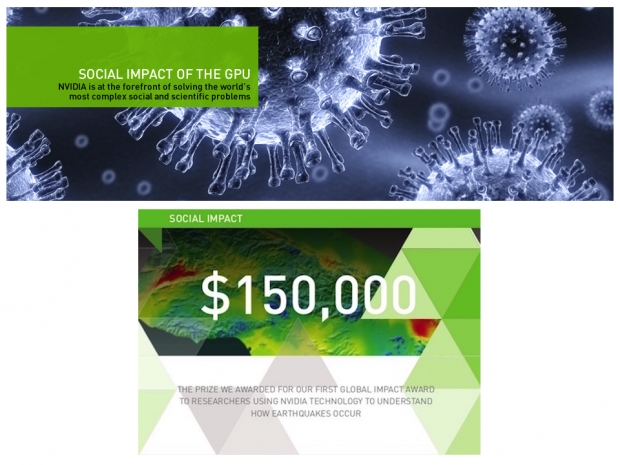
As of February 1st, Nvidia has announced five finalists to compete for its 2016 Global Impact Award, a yearly $150,000 research grant that goes to any researcher or institution that has used Nvidia GPU technology to make a positive social or humanitarian impact. This year's finalist teams come from Stanford University, Imperial College London, George Mason University, Duke University and Sweden's Chalmers University of Technology.
Stanford finalist: "GPUs Help Map Worldwide Poverty"
One of the five selected finalists this year is machine learning expert Stefano Ermon, who partnered with food security specialists David Lobell, Marshall Burke and some Stanford engineering students for their work in using GPU-accelerated deep learning to turn regular Google Earth images into statistical poverty models. The team trained a neural network to accurately predict poverty levels in sub-Saharan Africa from satellite image features like roads, farmlands and homes.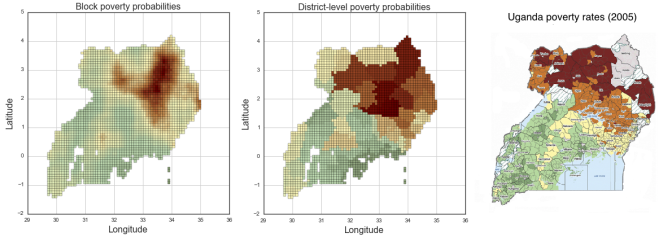
“There are countries in sub-Saharan Africa for which the most recent data we have is 20 years old, so we’re still extrapolating from early ‘90s estimates,” says Ermon.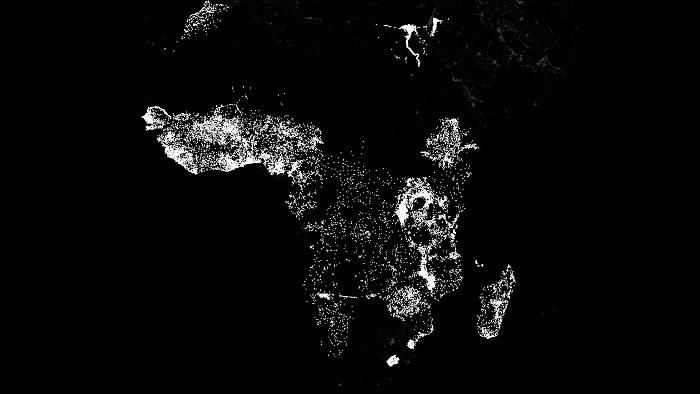
The team pulled pairs of satellite images showing day and nighttime views of the same area from Google Earth and Google Images, and then used Titan X and Tesla K40 GPUs to accelerate their image analysis. Training the final model took just three days on GPU-accelerated libraries. The blog post is titled “GPUs Help Map Worldwide Poverty.”
Imperial College London finalist: "Imperial College Uses GPUs to Spot Brain Damage"
The second finalist group this year is Konstantinos Kamnitsas from the BioMedIA Department of Computing at Imperial College London for his work in using GPU-accelerated deep learning for diagnosing and analyzing images of brain lesion segmentation.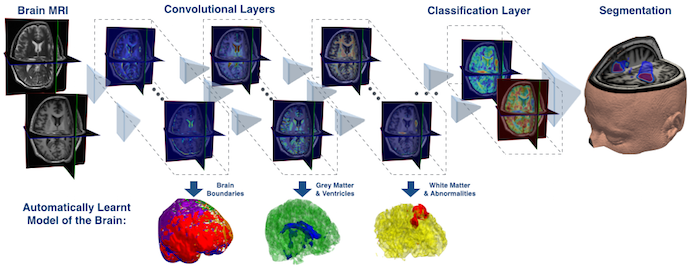
Using the group’s soon to be open-sourced DeepMedic software, doctors will now be able to take advantage of CUDA-accelerated computations that will complete brain lesion imaging in just 2 minutes compared to several hours without any GPUs. The blog post is titled “Imperial College Uses GPUs to Spot Brain Damage.”
George Mason University finalist: "How Haiti's Earthquakes Inspired New Ways to Map Structural Safety Using GPUs"
The third finalist group this year is David Lattanzi and his team at George Mason University for their work on using drone images in GPU-accelerated structure safety assessment to aid in disaster response (based on Haiti’s 2010 earthquake). 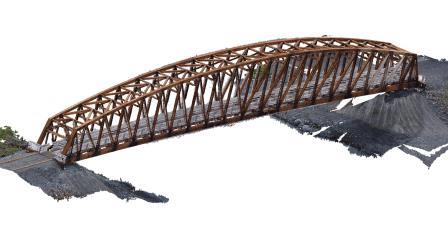
A full "Cloud Point" model of a bridge in Alaska (George Mason University)
"The longer it takes for an inspection after a disaster, the longer people can’t return home or go to work. Hospitals can’t operate. Basic services can’t function,” said Lattanzi.
The team uses drones to create virtual 3D models of civil structures (using tens of thousands of images), and then uses Hierarchical Point Cloud Generation (HPCC) to recreate scale-accurate details while representing a structure’s overall geometry. Results are then computed using Nvidia Tesla GPU acceleration. The blog post is titled “How Haiti’s Earthquakes Inspired New Ways to Map Structural Safety Using GPUs.”
Duke University finalist: "How GPUs Help Eye Surgeons See 20/20 in the Operating Room"
The fourth finalist group is Joseph Izatt and his team at Duke University for their work in using GPU-accelerated, real-time stereoscopic 3D data for eye surgery. A single Titan GPU takes a stream of raw “optical coherence tomography” (OCT) data, processes it, and renders 3D volumetric images.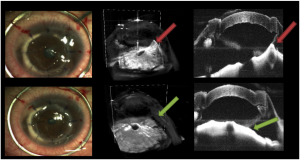
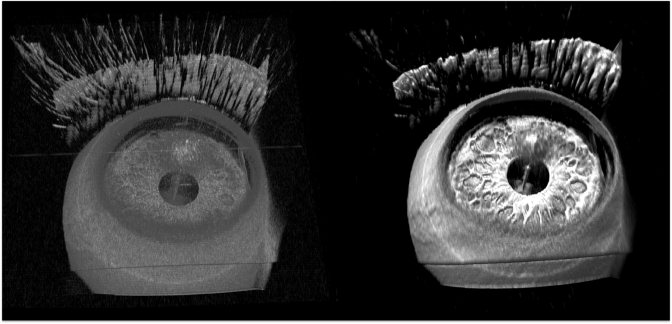
Comparison of conventional rendering (left) and enhanced ray casting with denoising (right) of the anterior segment
These images, at a resolution of a few micrometers, are projected into microscope eyepieces. With Nvidia 3D Vision-ready monitors and 3D glasses, live stereoscopic data can be viewed by both a surgeon using the microscope and a group observing the operation as it occurs. The blog post is titled “How GPUs Help Eye Surgeons See 20/20 in the Operating Room.”
Chalmers University finalist: "GPUs Help Monitor Rising Sea Levels with Pinpoint Accuracy"
The fifth finalist group this year is Tomas Hobiger and his team of reseachers at Sweden’s Chalmers University of Technology for their creation of a GPU-accelerated sea water level measurement system.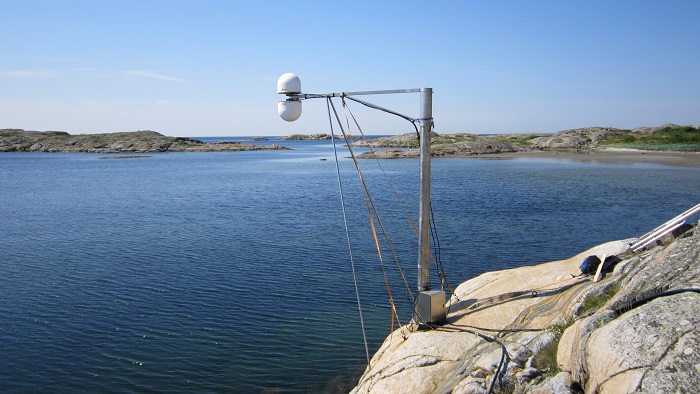
A Global Navigation Satellite System Reflectometry (GNSS-R) receiver measures GPS signals reflected off a sea water surface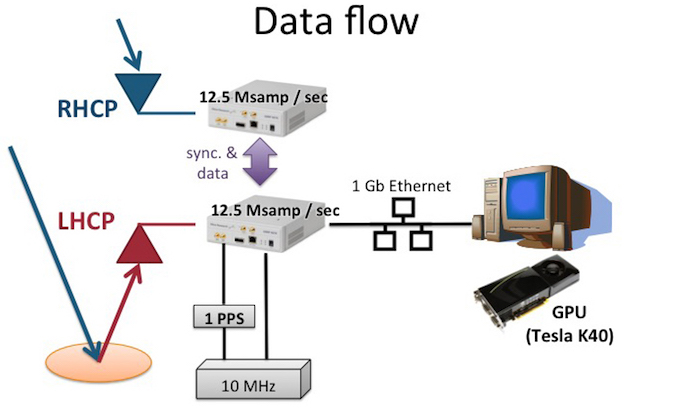
Data from reflectometry systems come in a constant stream at 800Mbps and must be consolidated using GPU acceleration
Instead of measuring water levels against reference land points, they are taking measurements from GPS receivers placed along the coastline in combination with GPS signals reflected off the water, known as “Global Navigation Satellite System Reflectometry” (GNSS-R). Nvidia GPUs then compute these data signals to determine water levels in real-time. The blog post is titled “GPUs Help Monitor Rising Sea Levels with Pinpoint Accuracy.”
Last year's 2015 Global Impact Award winner: San Diego Supercomputer Center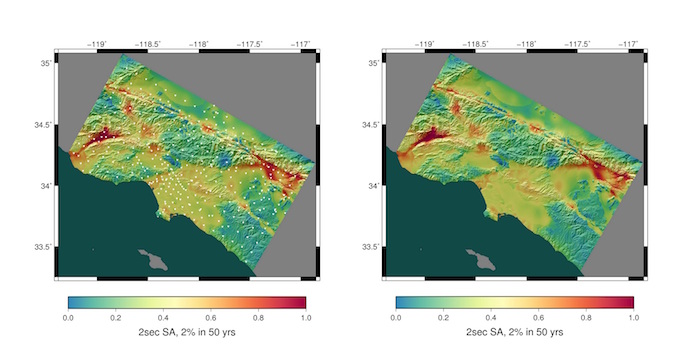
Last year, Nvidia’s 2015 Global Impact Award was given to Dr. Yifeng Cui and his team at the San Diego Supercomputer Center for their breakthrough work on simulating earthquakes for the improvement of seismic hazard analysis. Nvidia published a blog post titled, “Fault Finding: SoCal Researchers Use GPUs To Detect Earthquake Hazards Coming Our Way.”
According to Nvidia’s Global Impact Award webpage, government institutions are not eligible to apply for the award, making it available only for “researchers and non-profit institutions or universities based anywhere in the world.” Those interested in participating usually send in submissions sometime before the end October, and the evaluations occur the following February. Nvidia has yet to begin accepting applications for next year’s award, but we expect many researchers and institutions will be interested in the opportunity.
2016 Nvidia GPU Technology Conference, April 4 - 7th starting at 9:00am
This year’s GPU Technology Conference begins Monday, April 4th at 9:00am PDT at the San Jose McEnery Convention Center. Projected attendance this year is at 3,250. This year’s opening keynote by CEO Jen-Hsun Huang will be held on Tuesday, April 5th at 9:00am in Hall 3 with an emphasis on deep learning and artificial intelligence, self-driving cars, and robotics and autonomous machines.
Meanwhile, some of the other big research fields being presented at this year’s conference include astrophysics, computational biology, computational chemistry, computer and machine vision, energy exploration, finance, intelligent video analytics (IVA), computational physics, ray tracing, and high-performance computing (HPC). The full list of represented industries can be found at the bottom of the GTC homepage.

